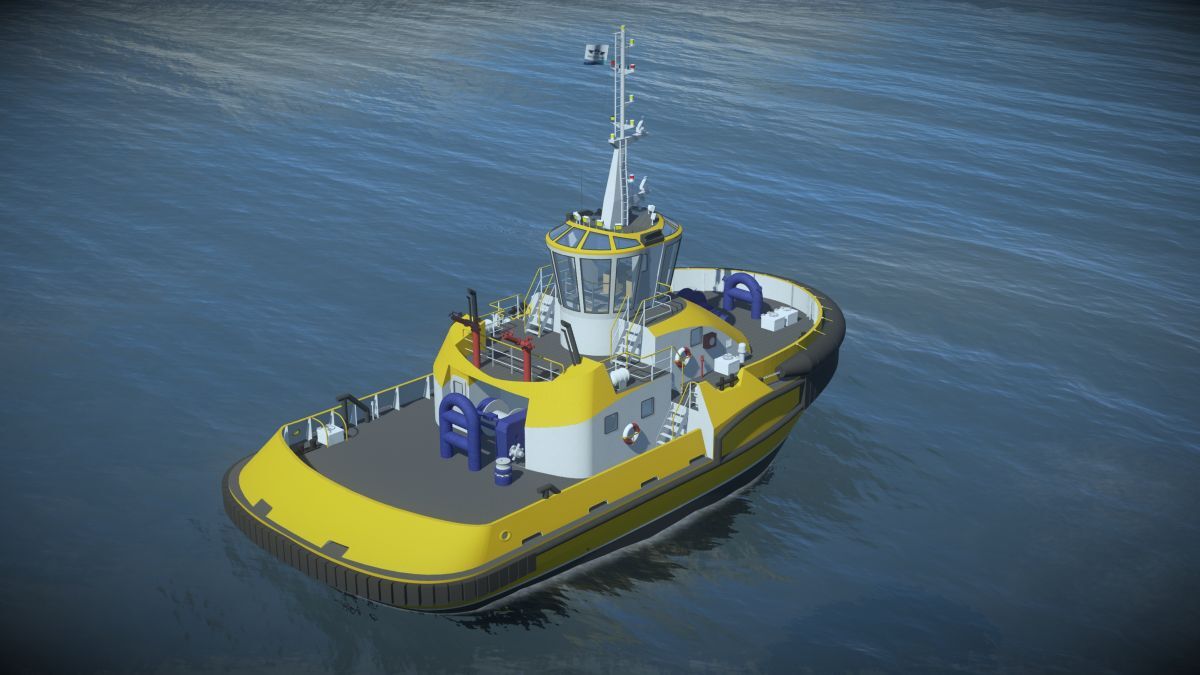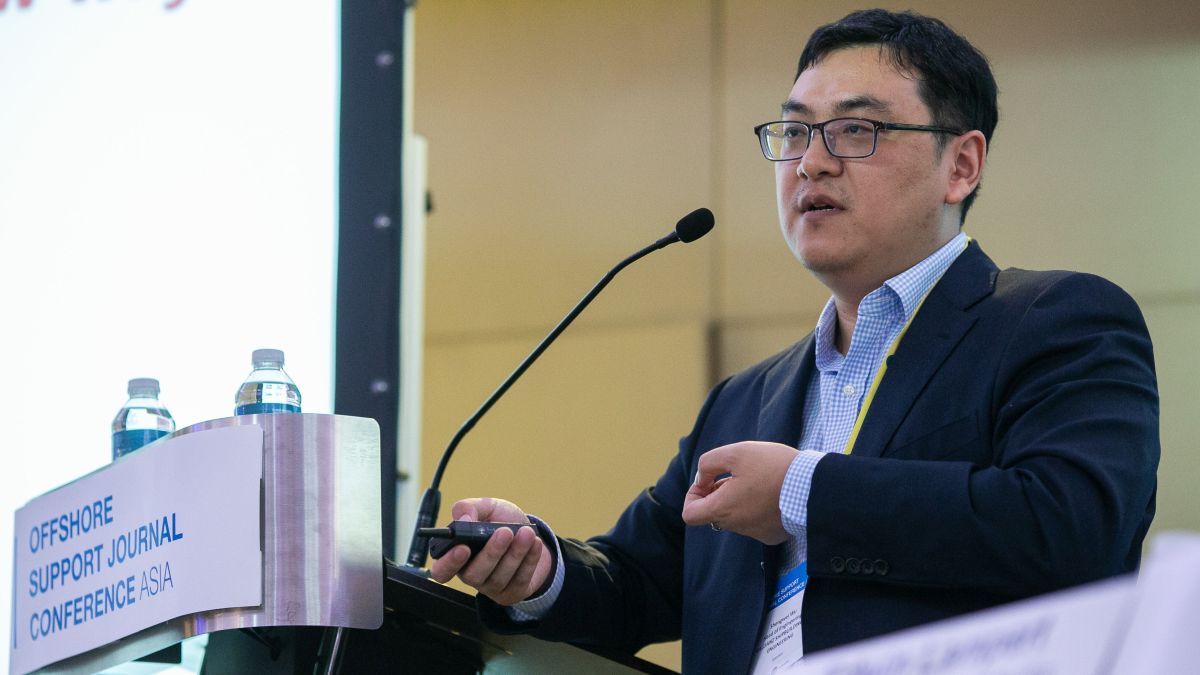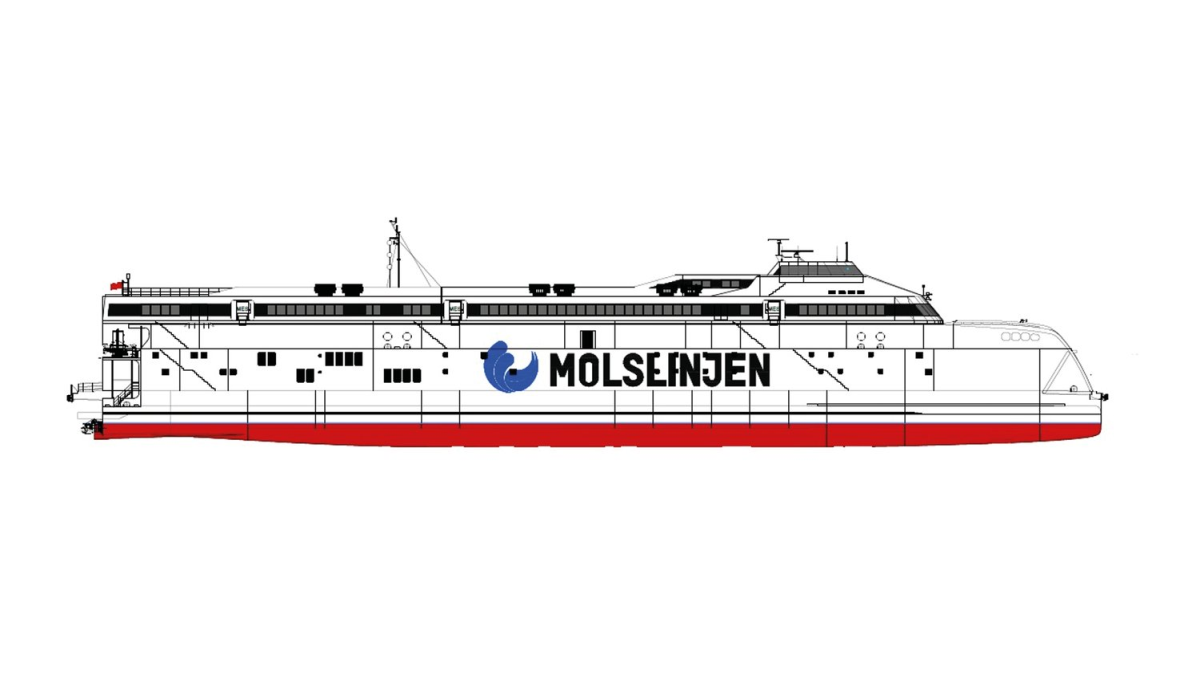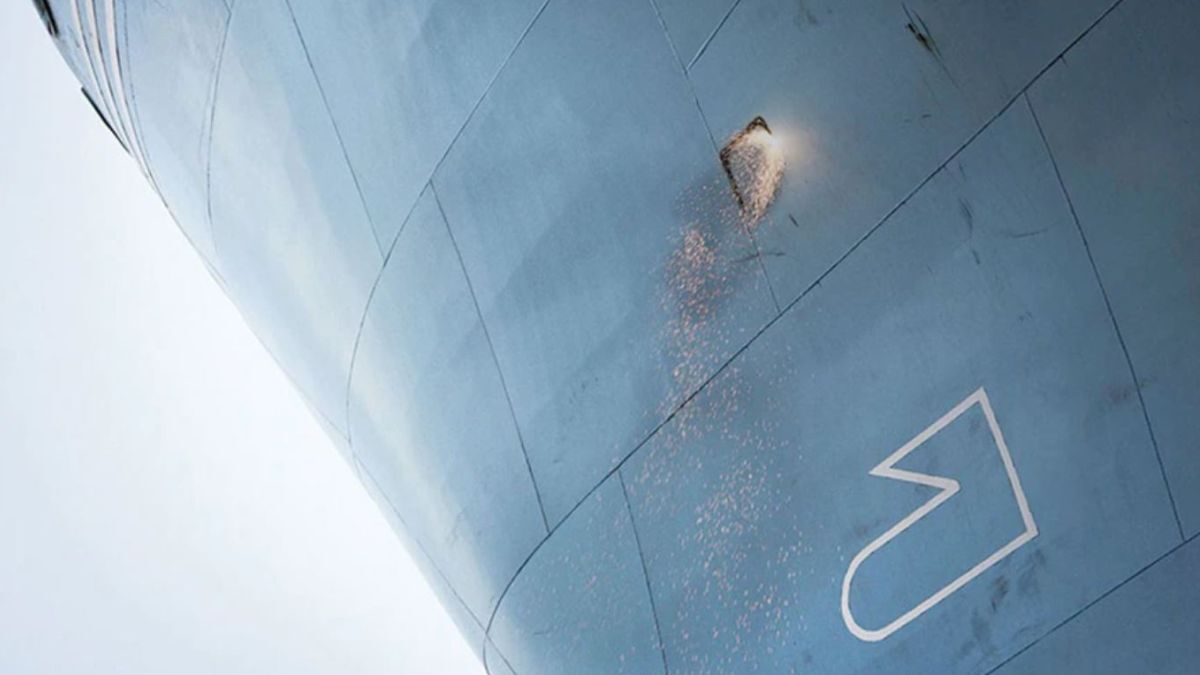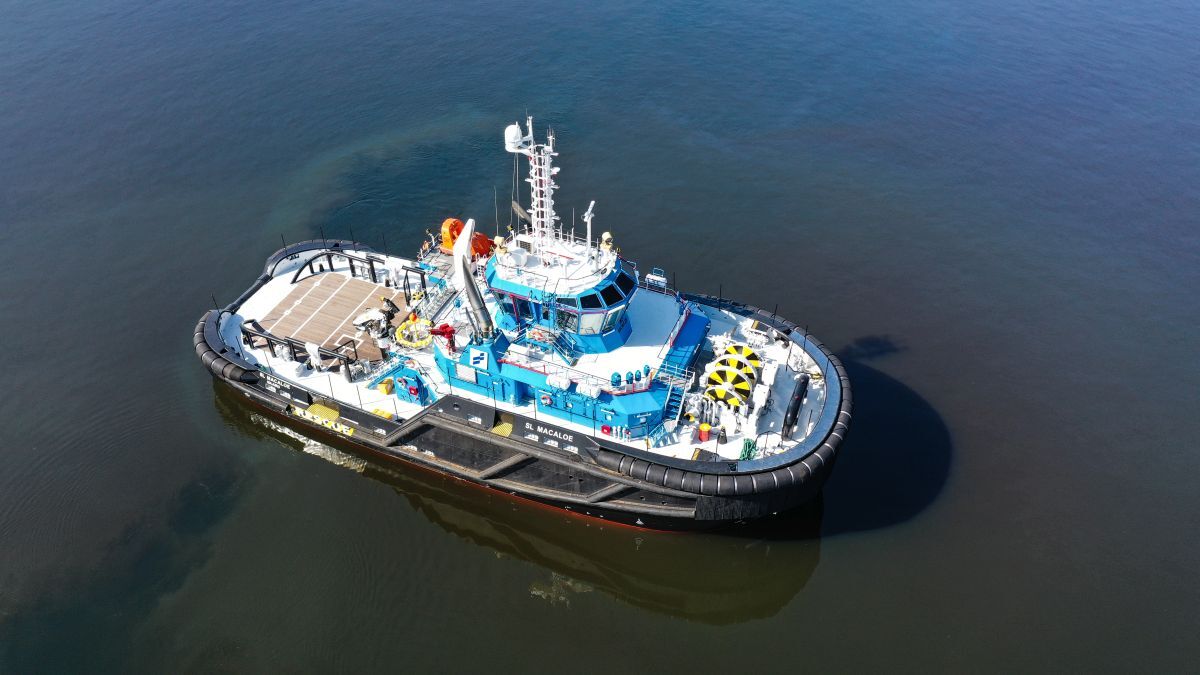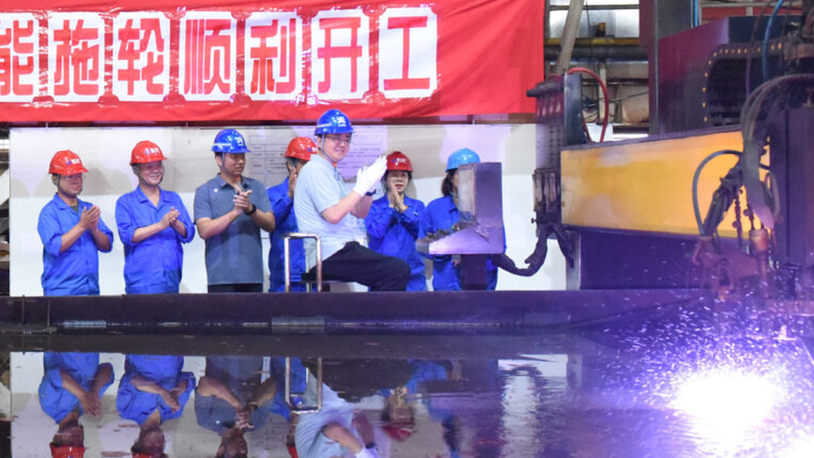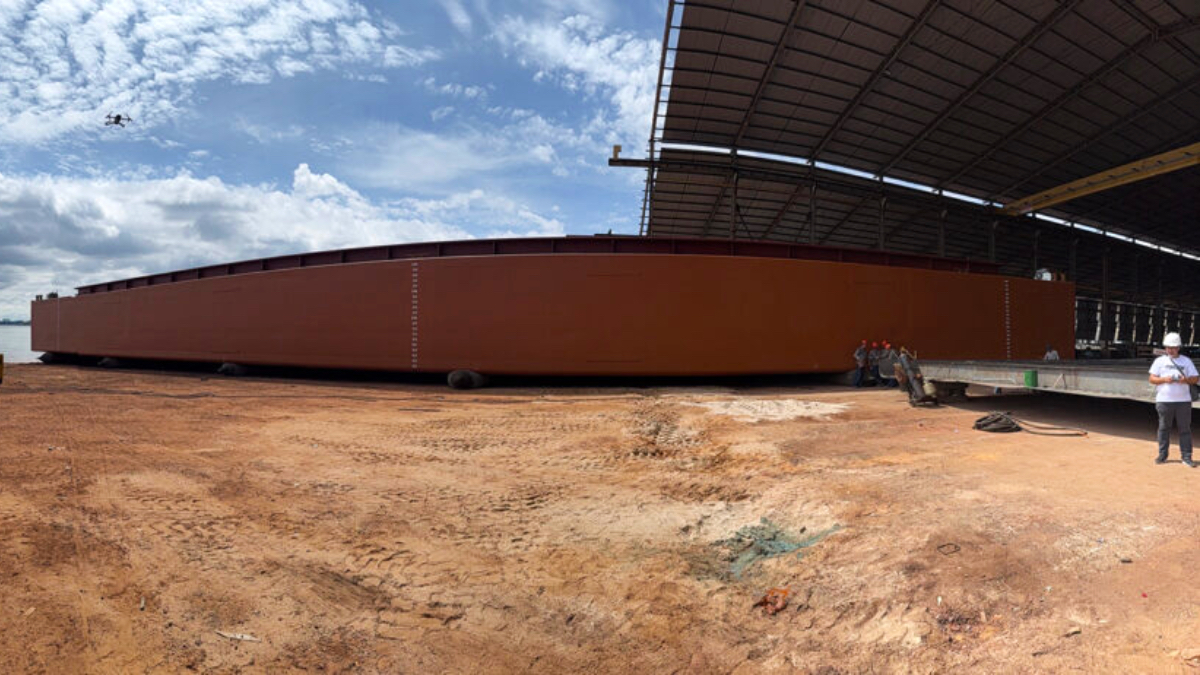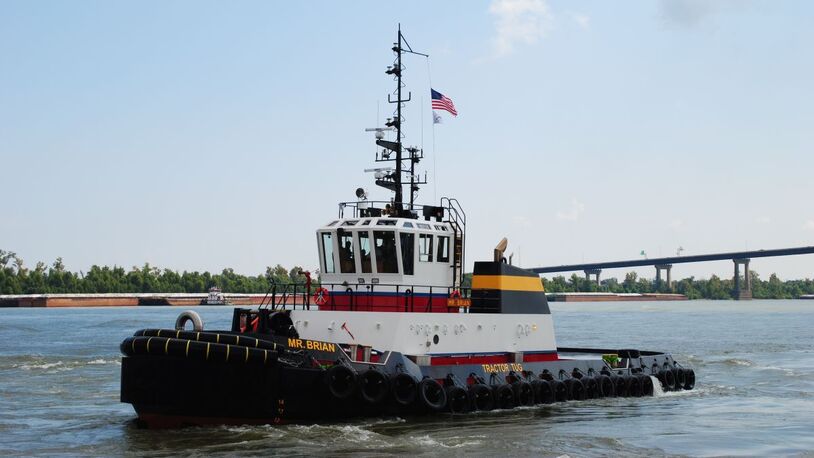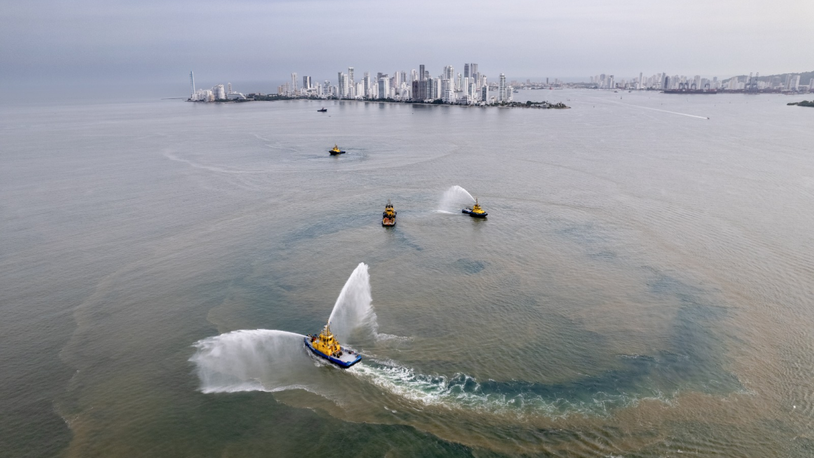Business Sectors
Events
Contents
Register to read more articles.
Interest grows in electric tug construction
Owners are working with naval architects to build battery-powered tugs for zero-emissions towage and ship handling
Tug owners, designers and builders will introduce electric-powered tugboats in the next few years as the technology starts to prove itself to early adopters
Turkish shipyards and Damen Shipyards were the first to produce battery-powered vessels that can operate with zero emissions. Now, others around the world are seeking to emulate this success.
Vallianz Holdings is building vessels with electric propulsion to handle ships in ports as part of its growing decarbonisation programme. The Singapore-headquartered vessel owner and builder is expanding its fleet with azimuth stern drive tugs for marine and offshore operations.
One such project involves the design, engineering and construction of an all-electric harbour tug to handle ships at its Indonesian shipyard. SeaTech Solutions has designed the electric tug, Shift Clean Energy will supply the containerised energy storage system and ABS will class this vessel.
According to Vallianz head of engineering Wu Sheng Wei, this project is progressing into the construction stage and will take two years to complete. 2,200 kWh of batteries will be required, some fixed on board and others in a portable system. A direct current grid and charging system will also be installed. “With small tugs, DC grids are easier and AC to DC could be challenging,” said Mr Wei.
This tug will operate purely on electric propulsion for zero emissions during shipyard and harbour operations, but a 100-kW generator set will be on board as a back-up, for longer distance transits and for emergencies.
Mr Wei said more electric vessels with hybrid propulsion will be required as pressure on owners to reduce emissions grows from regulators, banks and charterers, which have their own emissions reduction targets and green agendas.
“This means owners need to build and introduce greener vessels,” said Mr Wei at Riviera Maritime Media’s Offshore Support Journal Conference, Asia, held in Singapore, 12-13 September.
Options to reduce emissions effectively for offshore and port vessels involve batteries, alternative fuels, or both. Mr Wei said battery-hybrid propulsion is preferred by Vallianz.
“Battery-hybrid propulsion is the most relevant technology for us,” he said.
Worldwide, there are about 300 vessels in operation or on order with batteries, with half related to offshore and port operations. “These technologies are relevant to owners and more vessels are coming online to 2025 and 2026. This trend is growing,” said Mr Wei.
Installing energy storage increases tug newbuilding costs. “Batteries are costly. Although prices have fallen, it is still considered expensive,” Mr Wei explained. “There are commercial challenges and questions over how to size batteries.”
He also said there are concerns over battery safety, operating life and recycling older energy storage systems after use. Mr Wei said these can be overcome by using swappable battery containers when vessels are in port.
Once these concerns are overcome, there are operational and environmental benefits. “Batteries in hybrid propulsion result in 20-30% fuel savings and emissions reductions,” said Mr Wei. “This improves operating performance and relieves crew from maintenance.”
Other advantages from using batteries in port and towage operations include reducing underwater noise, onboard vibrations and engineroom maintenance. “There are maintenance improvements from switching off gensets. The payback period is three to five years.”
Tug design concept
In the UK, shipbuilder Harland & Wolff plans to build a fleet of electric tugs at shipyards in Scotland to cut emissions from vessel manoeuvring and towage.
It has worked with a consortium in the UK to design the electric tugboat for harbour and coastal towage with Macduff Ship Design, propulsion supplier Kongsberg Maritime and electrical system provider Echandia.
The concept design is based on a 25-m tugboat with a beam of 12 m and a depth of around 5 m, with Echandia batteries and electrical control systems with a 25-year lifetime.
Kongsberg will supply the azimuth stern drive (ASD) propulsion and vessel control systems. “This concept is an innovative design combined with proven battery and propulsion technologies with the aim to deliver a zero-emissions vessel,” said Macduff Ship Design managing director Ian Ellis.
Battery power will be backed up by generators driven by hydrogenated vegetable oil biofuel for exceptional operations or when shore charging is unavailable. The design includes an elliptical wheelhouse providing the master with a 360° view and a ship towing winch on the fore deck.
Detailed design and engineering has been underway to refine the concept. “We are developing this together and are looking at build options and potential funding options to assist with the high costs of developing this new concept,” said Mr Ellis.
North America
In the US, Crowley is building the first electric-powered tugboat, eWolf, alongside a microgrid charging facility in the Port of San Diego, California, to decarbonise ship towage, manoeuvring and docking.
“Building a sustainable, zero-emissions port of the future requires pioneering new and innovative technology, and a commitment to partnerships, so we can meet the needs of our communities, customers and people,” said Crowley vice president of advanced energy, Matt Jackson.
This facility will recharge the batteries on eWolf quickly and is designed to operate during off-peak hours from the grid. It is equipped with two containerised energy storage systems provided by Corvus Energy and a solar power array to support renewable energy use.
Each energy container will house battery modules, with storage capacity of almost 1.5 MWh, for a total capacity of 2,990 kW.
This charging station will be equipped with a battery monitoring system, high-voltage air conditioning, fire detection technology and a fire-fighting system. Master Boat Builders is constructing eWolf at its shipyard in Coden, Alabama, ready to enter service in 2024 or 2025.
Kirby Corp decided to be an innovator for its latest newbuild towboat, installing 1,243 kWh of batteries for hybrid-electric propulsion. Kirby Inland Marine’s Green Diamond has gone on time charter with Shell Trading to push barges throughout the Houston, Texas, port region.
This 22 m by 9 m vessel was constructed by San Jac Marine, Kirby’s shipyard in Channelview, Texas, with Caterpillar-manufactured generators and a combined 1,130 kW of power. Batteries and these generators drive two 575-kW Danfoss electric motors, each connected to twin screws.
Shell Energy Solutions is providing electrical power to charge the vessel’s Corvus Orca-series battery system from a plug-in station at Kirby’s Old River Fleet Dock.
In Canada, HaiSea Marine, a joint venture between Seaspan Marine and HaiSea Nation, was awaiting delivery of the final electric tug Sanmar Shipyards built in Turkey to a Robert Allan Ltd design. HaiSea Brave will join HaiSea Wamis and Haisea Wee’Git in Kitimat, British Columbia, Canada.
These ElectRA 2800-design battery-powered tugs, with 70 tonnes bollard pull, will support gas carriers docking at LNG Canada’s new export facility. Main suppliers for onboard propulsion and power include Corvus Energy, Caterpillar, Elkon, Schottel and Wärtsilä.
Sanmar is also building ElectRA design electric-powered tugs for SAAM Towage, Norway’s Buksér og Berging and for its own fleet. Navtek Naval Technologies designed and built four zero-emissions tugboats with batteries for propulsion with three ZeeTug30 vessels with around 30 tonnes of bollard pull and one ZeeTug45, with 45 tonnes of bollard pull operated by Gisas in Tuzla Bay. Other tug owners in Turkey, including Uzmar and Med Marine, also have plans to build electric tugs in their own associated shipyards.
Riviera Maritime Media’s Maritime Hybrid, Electric & Hydrogen Fuel Cells Conference will be held 17-19 October 2023 in Bergen, Norway. Use this link for further information and to register your interest
Related to this Story
Events
Offshore Support Journal Conference, Americas 2025
LNG Shipping & Terminals Conference 2025
Vessel Optimisation Webinar Week
© 2024 Riviera Maritime Media Ltd.


